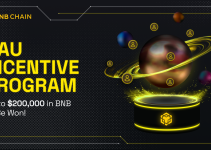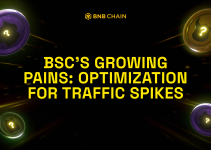Table of Contents

DeFlow recently published an insightful article examining the evolution of BNB and its growing role in the broader blockchain ecosystem. Building on this analysis, we reflect on how BNB has evolved far beyond its origins as a utility token on Binance to become a key asset in the broader blockchain ecosystem. Its use cases span DeFi, payments, infrastructure, and even adoption as a government reserve asset. This article explores BNB’s journey, its role in powering BNB Chain, and the factors driving its supply, consumption, and long-term value.
BNB: More Than Just a Token
BNB was first introduced by Binance in 2017 through an Initial Coin Offering (ICO), serving as a utility token for transaction fee discounts and platform benefits. However, BNB has since evolved into a core asset within a broader ecosystem. While Binance played a key role in its inception and remains a supporter of Web3 innovation, it does not control BNB or BNB Chain. The network is built on a decentralized, community-driven model, allowing anyone to participate as a validator by staking BNB. This structure ensures that BNB Chain operates independently, reinforcing its vision of decentralization and open participation.
BNB started as a utility-driven token, providing fee discounts and enabling governance participation. BNB holders benefited from reduced transaction fees, creating an incentive to grow alongside the platform, while also playing a role in governance, such as voting for token listings and project decisions. Over time, BNB has evolved far beyond these initial use cases, expanding its role across DeFi, AI, and real-world applications.
To maintain long-term value, mechanisms like quarterly token burns were introduced, systematically reducing supply. As of January 23, 2025, the circulating supply of BNB stands at approximately 142.4 million, with the total supply expected to decrease to 100 million through ongoing burns. These deflationary measures, combined with an expanding range of use cases, reinforce BNB’s economic resilience and long-term sustainability. Today, BNB powers a wide range of initiatives, including Binance Launchpad and Launchpool, which have engaged millions of users and locked in significant value across the ecosystem.
Beyond Finance
BNB’s role has grown beyond just being the native token for transactions—it now supports a broader blockchain ecosystem designed for scalability and accessibility. BNB Chain continues to develop as an industry-leading network with a focus on usability and innovation:
- BNB Smart Chain (BSC): A secure and efficient EVM-compatible Layer 1, serving as the governance chain of the ecosystem while offering low-cost transactions and strong support for DeFi, GameFi, and other applications.
- opBNB: A Layer 2 scaling solution that enhances transaction speeds and reduces costs, making blockchain interactions more seamless and affordable.
- BNB Greenfield: A decentralized storage network that enables greater data ownership while supporting blockchain-based AI applications and content distribution.
By continuously improving these components, BNB Chain aims to provide a reliable and accessible foundation for developers and users looking to build and engage in Web3.
BNB Chain is one of the most active blockchain ecosystems, with over 5,600 decentralized applications (Dapps), a large and engaged user base, and a total DeFi value locked (TVL) exceeding $3.6 billion. Our growth and adoption continue to position us alongside leading networks and reinforce our role in driving blockchain innovation.
Expanding BNB Chain’s Real-World Applications
BNB continues to evolve beyond its origins, powering an expanding range of applications across DeFi, Real-World Assets, AI, and decentralized science (DeSci).
In decentralized science, BNB is enabling seamless financial support for researchers. Initiatives like the Happy-Sci campaign facilitate microtransactions for PhD students, demonstrating how blockchain can streamline funding in academia. Similarly, partnerships like dtcpay’s integration with BNB Chain make stablecoin payments more accessible and cost-effective, driving real-world adoption of blockchain technology in commerce.
BNB is also at the forefront of AI-driven blockchain applications. Our infrastructure supports projects like MyShell and DIN, which leverage BNB Chain to develop AI agent-based systems, automated data labeling solutions, and Web3-native AI tools. Additionally, BNB Greenfield—our decentralized storage solution—provides a robust framework for AI model development and data management. By integrating AI with blockchain, we are unlocking new possibilities for decentralized computing, data ownership, and autonomous applications.
With these advancements, BNB is playing an increasingly vital role in shaping the future of Web3, enabling innovation across multiple industries while reinforcing its long-term value.
The Road Ahead
BNB’s potential extends far beyond its current role, with a vision that bridges DeFi, AI, and real-world applications. As blockchain adoption accelerates, BNB is positioned to play an even greater role in powering innovation across diverse industries.
With a strong foundation built on utility and scalability, BNB continues to evolve alongside the broader Web3 ecosystem. The ongoing reduction of total supply through token burns reinforces its long-term sustainability, while its integration across thousands of decentralized applications (DApps) highlights its growing influence.
Looking ahead, BNB has the potential to expand its role in mainstream finance, decentralized AI, and real-world utility. As institutional interest grows, and more economies explore digital assets, BNB could see increasing adoption in payments, decentralized governance, and even as a reserve asset. By continuously enhancing its ecosystem and embracing new opportunities, BNB is well-positioned to contribute to the next phase of blockchain-driven transformation.


